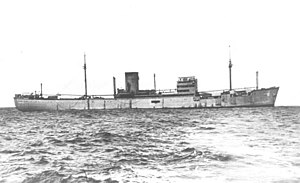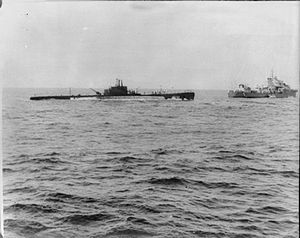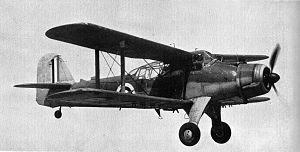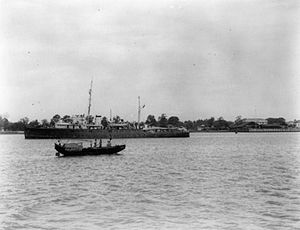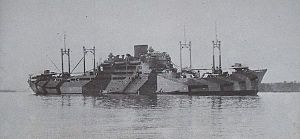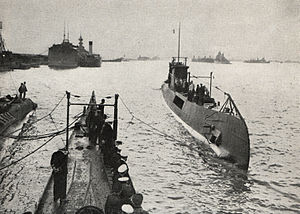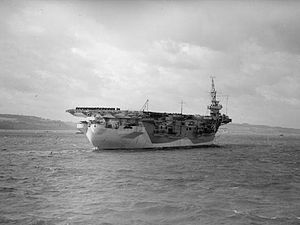
This is a timeline for the Battle of the Atlantic (1939–1945) in World War II.

Albrecht Brandi was a German U-boat commander in Nazi Germany's Kriegsmarine during World War II. Together with Wolfgang Lüth, he was the only Kriegsmarine sailor who was awarded with the Knight's Cross of the Iron Cross with Oak Leaves, Swords and Diamonds. The Knight's Cross, and its variants were the highest awards in the military and paramilitary forces of Nazi Germany during World War II. Brandi is credited with the sinking of eight merchant ships for a total of 25,879 gross register tons (GRT), one auxiliary warship of 810 GRT, and three warships of 5,000 long tons.

HMS Paladin was a P-class destroyer of the Royal Navy that served in the Second World War. She was built by John Brown and Co. Ltd., Clydebank. She saw action in the Mediterranean and Far East. After the war she was converted into a type 16 frigate and was eventually scrapped in 1962.

HMS Sportsman was a third-batch S-class submarine built for the Royal Navy during World War II. Completed in 1942, she spent most of the war serving in the Mediterranean Sea. After an initial patrol off Norway, she sank the heavy transport Général Bonaparte in the Mediterranean in 1943 and missed a French oil tanker. She was heavily damaged after a mistaken attack by an Allied bomber, and was sent east after repairs to participate in operations in the Black Sea. After the operation was cancelled, Sportsman patrolled the Aegean Sea, sending several Greek and German ships to the bottom. She sank the German transport SS Petrella in early 1944 despite it being clearly marked as a prisoner-of-war ship, killing 2,670 out of 3,173 Italians aboard. Sportsman sank several more ships, and suffered minor damage when she was detected and sighted while attempting to attack a convoy.

HMS Tigris was a T-class submarine of the Royal Navy. She was laid down at Chatham Dockyard and launched in October 1939.
HMS Marigold was a Flower-class corvette of the Royal Navy. She was launched on 4 September 1940 and was sunk by an Italian air-dropped torpedo on 9 December 1942.
Convoy SL 125 was the 125th of the numbered series of World War II SL convoys of merchant ships from Sierra Leone to Liverpool. Ships carrying commodities bound to the British Isles from South America, Africa, and the Indian Ocean travelled independently to Freetown, Sierra Leone, to be convoyed for the last leg of their voyage. Thirty-seven merchant ships departed Freetown on 16 October 1942 and were joined at sea by five more.
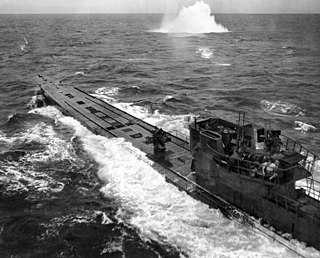
The Gruppe Monsun or Monsoon Group was a force of German U-boats (submarines) that operated in the Pacific and Indian Oceans during World War II. Although similar naming conventions were used for temporary groupings of submarines in the Atlantic, the longer duration of Indian Ocean patrols caused the name to be permanently associated with the relatively small number of U-boats operating out of Penang. After 1944, the U-boats of the Monsun Gruppe were operationally placed under the authority of the Southeast Asia U-boat Region.

Western Local Escort Force (WLEF) referred to the organization of anti-submarine escorts for World War II trade convoys from North American port cities to the Western Ocean Meeting Point near Newfoundland where ships of the Mid-Ocean Escort Force (MOEF) assumed responsibility for safely delivering the convoys to the British Isles.

HMS Wrestler (D35) was a V and W-class destroyer built by the Royal Navy during the First World War and active from 1939 to 1944 during the Second World War. She was the first Royal Navy ship to bear that name, and the only one to do so to date.
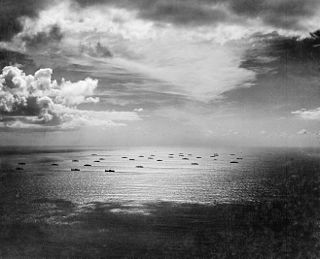
The UG convoys were a series of east-bound trans-Atlantic convoys from the United States to Gibraltar carrying food, ammunition, and military hardware to the United States Army in North Africa and southern Europe during World War II. These convoys assembled in Hampton Roads near the mouth of Chesapeake Bay and terminated in various North African locations as Axis forces retreated from 1942 through 1945.

The CU convoys were a World War II series of fast trans-Atlantic convoys to the British Isles. The earliest convoys of the series were tankers sailing directly from petroleum refineries at Curaçao to the United Kingdom. Most convoys of the series assembled in New York City and included fast freighters and troopships, with tankers arriving from Aruba via TAG convoys to Guantánamo Bay and GN convoys from Guantánamo to New York.

HMS Tynedale was a Hunt-class destroyer of the first subgroup which served during the Second World War. She was sunk by the U-593 on 12 December 1943.

Arctic naval operations of World War II were the World War II naval operations that took place in the Arctic Ocean, and can be considered part of the Battle of the Atlantic and/or of the European Theatre of World War II.

Aikoku Maru (愛国丸) was an armed merchant cruiser of the Imperial Japanese Navy in World War II. The ship entered service in 1940, the ship was later converted to an ammunition ship. She was sunk in February 1944 during Operation Hailstone.

The 8th Submarine Squadron of the Imperial Japanese Navy was based at Swettenham Pier, Penang, Malaya, until late 1944 during World War II. Its mission was to disrupt Allied supply lines in aid of Nazi Germany.

The Gibraltar convoys of World War II were oceangoing trade convoys of merchant ships sailing between Gibraltar and the United Kingdom. Gibraltar convoy routes crossed U-boat transit routes from French Atlantic ports and were within range of Axis maritime patrol aircraft making these convoys vulnerable to observation and interception by bombers, submarines, and surface warships during the Battle of the Atlantic. OG convoys brought supplies from the United Kingdom to Gibraltar from September 1939 until September 1942. Beginning with Operation Torch, OG convoys were replaced by KM convoys transporting military personnel and supplies from the United Kingdom to and past Gibraltar into the Mediterranean Sea. HG convoys brought food, raw materials, and later empty ships from Gibraltar to the United Kingdom from September 1939 until September 1942. After Operation Torch, HG convoys were replaced by MK convoys returning mostly empty ships from the Mediterranean to the United Kingdom. KM and MK convoys ended in 1945.

The Kara Sea U-boat campaign was a German submarine operation in the Arctic waters of the Kara Sea during the Second World War. The plan was to repeat Operation Wunderland in Operation Husar. The Deutschland-class cruiserLützow was to sortie into the Kara Sea with U-boats in support, to attack Soviet ships.

Madagascar, then officially known as French Madagascar, was a French colony at the outbreak of the Second World War, having been under French administration since 1885. It played an important role in the war due to the presence of critically important harbors, the contribution of Malagasy troops, and was also the scene of fighting between Allied and Vichy French forces in 1942. After the fall of France in 1940, Madagascar became a crucial flashpoint in contention between the Free French movement and Vichy France. The island was also consequential in the Pacific theater of the war as Imperial Japanese naval forces operated unopposed off the island for some time.

HMS Weston was a Shoreham-class sloop of the British Royal Navy. Weston was built at Devonport Dockyard in 1931–1933.


